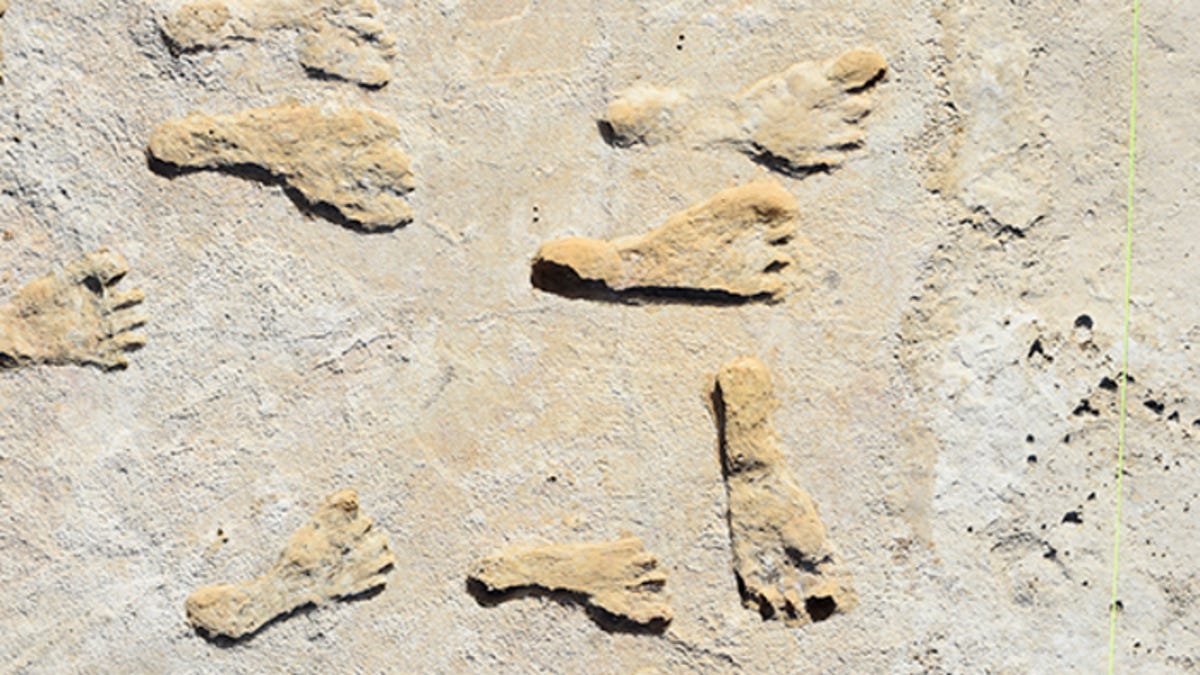Oldest fossil footprints in North America are teaching us about early humans
The footprints were found in 2009, but a recent analysis of seeds trapped in them reveals their age.

The fossilized human footprints were discovered at White Sands National Park in New Mexico in 2009. A recent analysis of seeds found trapped in the prints helped date them.
Fossil footprints found in New Mexico's White Sands National Park in 2009 now prove that humans were walking across North America around 23,000 years ago. A recent analysis of seeds trapped in the fossils helped scientists at the U.S. Geological Survey date the footprints, which may help prove when people first arrived in the Americas. The analysis is explained in a study published this week in the journal Science.
Scientists believe ancient humans came to the Americas via a land bridge, now submerged, that once connected current Siberia to Alaska. But the exact date the earliest humans made it here is still unknown, and scientific estimates vary.
These fossils help narrow it down, indicating that the prints were made sometime between 22,800 and 21,130 years ago. That upends a previous theory that early humans didn't make it south of Canada until glaciers melted between 16,000 and 13,500 years ago.
Before the seeds helped date these footprints, the oldest print known in the Americas was found in Chile in 2011, and was only (only!) 15,600 years old.
David Bustos, a resource program manager at White Sands National Park, was the first to spot the prints in 2009.
"We knew they were old, but we had no way to date the prints before we discovered some with (tiny seeds from aquatic plants) on top," he told the Associated Press.
The footprints are so fragile, researchers had to be careful examining them.
"The only way we can save them is to record them -- to take a lot of photos and make 3D models," Bustos said.
The size of the footprints indicates most were probably made by children and teenagers.

